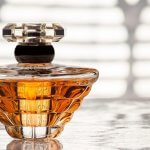If you’ve ever wanted to launch your own perfume line, you’ve probably asked yourself how do you begin, what are the practical steps involved, what are the costs, how do you avoid the pitfalls that others might have made throughout the process and a vast array of other questions.
Having created thousands of fragrances over the years for vast array of large, medium and entrepreneurial clients, we know full well that starting a perfume line is one thing; and it’s quite another to do it with the right amount of direction and professional understanding.
So, with the insight of our key Alpha Aromatics team members, we created the following practical step-by-step guide to starting your own perfume line, with tips on how to find reliable supply sources, how to select the right ingredients, how to find the right filling company for smaller startup fragrance runs and a wealth of other insider industry wisdom.
Read on to get started, or contact our team today to make your fragrant dreams come true!
How Much Does It Cost To Startup A Perfume Line?
Before you venture down the path of starting any enterprise, it’s always smart to know what the upfront investment will be. So let’s get down to the bottom line before we go any further.
According to Arnold Zlotnik, President and CEO of Alpha Aromatics, “Using one of our existing finished fragrances, the average cost to launch a perfume line with a minimum of 200 bottles that are branded, packaged, filled and capped, you should be prepared to spend anywhere from $8000 to $10,000 to do it professionally. If you’re creating a fragrance from scratch, there would be additional effort and costs involved.”
What Does It Mean To Create Your Own Perfume Line?
Putting one’s name on anything denotes a personal responsibility for it. When it comes to a product made for consumers, this means that whatever it is must be safe and must perform whatever it is supposed to do. In the case of creating one’s own perfume line, the first step is not creating the fragrance, surprising though that may seem. We know this all too well and offer the following in-depth answers as to how to begin.
Start With a Plan And Fragrance Brief
Everything starts from a workable business plan, which includes: product definition, marketing niche and strategies and profit and loss projections. Product definition involves narrowing down the fragrance product. Decisions can include whether to offer a single scent in several diverse formats, such as: cologne, body lotion and soaps, or just one type of product, but in different scents.

Planning also involves a decision concerning your target-marketing base. It answers the question: Who will buy your new fragrance? This concerns researching consumer trends in order to ascertain which demographics your fragrance will appeal to and in what product form. For example, some consumers from older age groups might prefer sustainable simple scents with essential oils and natural bases, while a younger clientele might lean more towards celebrity-endorsed fragrances.
Research Clientele And Target Consumer Base
A target market can be tricky to ascertain. For example, the majority of men do not buy their own fragrances, and if they do, they mostly select one favored by their significant others. Statistics indicate that women today buy 60 to 70% of all men’s fragrances (often to wear themselves). Fragrance developers are actively seeking marketing solutions that will persuade men to acquire scent collections for different occasions (day, evening, work, play). Deciding on your desired market place as quickly as possible will eliminate a great deal of unnecessary research.
Identify Your Message And Establish Your Target Demographic
Before you can establish any advertising campaign to promote your new fragrance, you must first identify the unique message it offers to consumers. Beyond the simplistic ‘desirable quarry” approach proffered by Tom Reichert, in his book, The Erotic History of Advertising, whose message is solely to use a scent to attract the attract the opposite sex, there are other marketable messages to consider. The list is endless, but some ideas include: freedom, passion, youth, beauty, serenity and rebellion.

It is not enough to just settle on a fragrance that will work for either men or women. Inclusive in this equation is also age range, whether a day or night time fragrance and applicable accords for the new scent. This involves an understanding of marketing techniques, which in the case of perfume, involves much more than just selling an aroma. In the words of perfumer, Serge Lutens: “It is potentially a carrier for the imagination. Perfume is thick; it is poison and pure desire; it is eros in person.”
Consider Advertising Factors
The most important factor in your advertising campaign will be your ability to tap into the psychological link of your brand with an abstract idea such as: femininity, masculinity or passion. This is why so many perfume ads even from times past are erotic in nature. How many recall the magazine ads for the Lanvin fragrance, My Sin, illustrating one black cat with three white kittens by her side, implying shall we say politely, a ‘night out on the town?’
Advertise through press releases, demonstrations and a website. Set up some social media pages and offer discounts to first time customers. Go to flea markets and give out samples along with written information about the scent and its ingredients.
Understanding And Harnessing The Power Of The Internet
In addition to setting up a website, you can promote your new perfume to consumers by tapping into digital influences such as You Tube, Instagram and Facebook. Learn how to create your own videos and target ads to perfume enthusiasts via the major social media sites. Advertise on major websites frequented by your targeted audience.
Your Marketing Must Appeal to All Five Senses
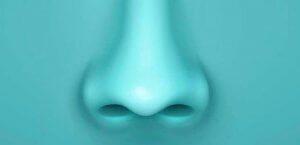
Making your new brand irresistible means it must appeal to all five senses. This is accomplished via sensory marketing. The benefit of this tactic is that it provides a complete consumer experience by creating an emotional bond between the product and the purchaser. Sensory marketing is a uniquely interactive tactic to win audience attention. Catering to only one sense at a time is the biggest marketing mistake any seller of anything can make.
It is not always possible to harness the power of smell as potent as it is to human feeling and emotion. This is particularly true with the medium of television. In the words of Sammy Richard Dana, author of Advertising and Popular Culture, “The vast majority of televised perfume advertisements make no effort to describe the scents they are promoting.”
Sensory marketing wins trusts and attention by appealing to each of the five senses. This can entail the utilization of captivating, colorful images and video, lively music in the form of a jingle or a slogan, and the capitalization of touch and texture with either high quality card stock on mailed advertisements or making your perfume bottle feel memorable when held.
Discover why perfume bottle design is often as important as scent design.
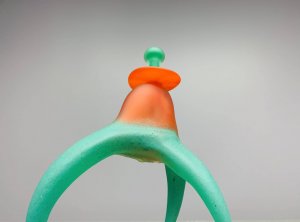
While taste per se is not applicable in this particular instance, the sense of smell via sampling is very effective. The smell of coffee and cookies baking are double whammies because they appeal to both smell and taste. Nigel Groom suggests in The New Perfume Handbook sampling via scent strips, plastic sachets and perfume pearls, which contain a powdered form of your unique perfume. All these sensations become imprinted in the consumer mind, pique human interest and contribute to brand loyalty.
To better understand how to build a brand using the power of fragrance, check out this fragrant guide created by our chief perfumers.
Now, Let’s Get Started With Your Aromatic Dream
The following are a few words of wisdom from our key team members to help you along the journey of fulfilling your entrepreneurial dream of starting you’re own perfume product or product line.
Finding A Reliable Supply Source
First and foremost, every creator of a perfume line, whether new or established must secure a reliable source for bottles, caps and pumps; a bottle or box for perfume if desired; labels or screen prints for bottle or box and applicable artwork must be in place for the label, box and/or bottle. Here’s a great checklist to help you identify a quality fragrance supplier.
Creating A Unique Name and Bottle For Your Fragrance
Developing your new brand means making your fragrance stand out among a sea of others. A catchy name and distinctive bottle are vital to perfume marketing and promote recognition and sales. Register your new name with the appropriate state and city offices and obtain necessary business licenses. Scent alone never sells. If it did, no special ads or fancy bottles would be needed. Many fragrances also have comparable aromas and/or contain similar ingredients. Both the name and bottle will help to set your brand apart from others.
Your selection of packaging should complement the type of fragrance you are creating. Customers expect luxurious packaging for a perfume that will cost them $60 an ounce. The most expensive perfume in the world costs over $200,000 per bottle because its crystal bottle is encrusted with diamonds. For reasonably priced fragrances, an attractive bottle and label will suffice.
Selecting And Buying Ingredients For Your New Perfume Line
Perfume consists of a blend of essential oils in base oil blended with alcohol and water. Selecting fragrance ingredients will depend on the character you have assigned to your unique scent. Will it be sensual, oriental, woodsy, elegant or sporty? Only you know the answer. Selected essential oils form the basis of any perfume, and are referred to as notes. The top notes evaporate quickly; the middle notes then follow suit. The base notes finish the fragrance and last the longest on skin. Sometimes other elements are added which can include: sea salt, spicy black pepper and earthy vetiver. Here is a detailed overview of the how to identify the notes of a fragrance.
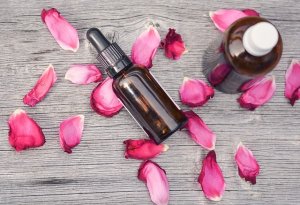
Essential oils are known to evaporate at different rates, which means that a fragrance changes over time as it is worn. Experimentation is a necessary part of the perfume creation process. The order in which you mix your ingredients is very important because it affects the scent. If you change the order in which you mix ingredients, make sure to record it, as you may prefer the new result. If the fragrance is too strong, it can be diluted with the addition of more water. A tablespoon of glycerin will help to increase the longevity of the scent.
Be sure to explore our blog for more guides on all aspect of fragrance creation.
Find An Filling Company For Small Fragrance Runs
At first, it will be easier and cheaper for you to fill orders yourself, as most companies require a minimum of 1,500 to 2,000 pieces per project. As you build your client base, you will need to source a reliable filling company to help out with smaller to larger runs.
Alpha Aromatics And Supply Sourcing
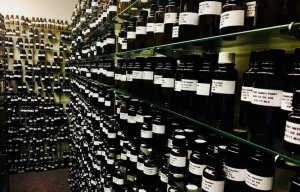
Sourcing must come before working on the fragrance. It is that proverbial cart before the horse sort of thing. In the words of our team, “What we at Alpha Aromatics normally do is once we have the sourcing in place, we can start working on the fragrance. Believe it or not, the fragrance is usually the quickest part of this process, and this is why we try to make sure that everyone has the other things in place.”
Alpha Aromatics 100-Pound Minimum
After a customer approves a certain scent, Alpha Aromatics has a 100-pound minimum. Normally, our fine fragrance costs run between $18 and $40 per pound. It’s hard to provide an exact price because every fragrance is different and the material costs do vary. We can say that this range will probably be an extreme, from one end to the other, but most of the work we do does fall in the high teens to high twenties per pound. One hundred pounds breaks down to 1600 ounces. So, if you have a standard 1.7 ounce bottle, you would be looking at about 920-940 bottles you can make out of the 100 lbs.
Determine Your Markets
Have a market place in mind. Research where different types of fragrances sell well. For example, natural fragrances based on plant and flower essential oils usually fare well at craft shows and farmer’s markets. Moderately priced scents sell more briskly at drug and retail department stores. Pricing and packaging should be the main factors determining appropriate market places.
Offer Fragrance Samples
Mrs. Fields once said that she was never happier than when she was baking her iconic chocolate chip cookies, but when she first started, she couldn’t sell them. In an interview, she once stated that she began to give them away to passersby, who after sampling her cookies realized how delicious they were. The same idea holds true for perfume sales. Giving out fragrance samples commits your scent to memory and aids in sales. You can make them in the form of tiny capsules, ‘scratch and sniff’ papers and leaflets.
Get Into Retail Stores
This aspect of your perfume launch will take some time to develop. You must locate reliable wholesalers or distributors who will sell your product to retail outlets. They will charge anywhere between 20 to 50%, which translates into a wholesaler price of $6.25 for your projected retail price of $25 per 1-ounce bottle. The wholesaler will then sell it to the retailer for $12.50, who will then double the price and sell it in the store for $25.00.
Be Patient
In the words of Ann McClain, creator of MCMC Fragrances, “Every step in creating a perfume takes time. I make dozens of trials of a fragrance before considering it final. I wear it on my skin for weeks and sometimes months. I let my friends wear it and give me feedback. I change the scent again slightly. It takes patience, dedication and perseverance.”
In Conclusion
Our researchers and chemists at Alpha Aromatics have been producing fine perfumes for decades. When it comes to translating any company’s vision into fragrance terms that will attract and engage consumers, our expertise is unparalleled. Our compositions are used for a multitude of purposes including but not limited to: superior quality perfumes; scent branding; personal care products; candles and diffusers and fragrances for home products.
Our 85,000-square-foot Technology Center located in Pittsburgh lies at the heart of our constant state of innovation within the world of industrial science. Roger Howell, Vice president of Alpha Aromatics, and our team of chemists are always on top of industry trends and our laboratories are equipped with the best state-of-the-art tools that money can buy. These include: gas chromatography, mass spectrometry, headspace analysis, distillation, extraction and quality control technology.
So get started on your new perfume line today. Hard work and effort will pay off in the end.
Final thought about starting a new business: Why join the navy if you can be a pirate? ~ Steve Jobs
This blog was created with the insight, direction and approval of our chief perfumer, Roger Howell, our President and CEO, Arnold Zlotnik, and our key Alpha management and staff. Learn more about our company’s mission, our credentialed and degreed perfumers as well as the passion behind our every fragrance creation.
How much does it cost to start a perfume line?
How do you start a perfume line?

1. Research clientele and target consumer base 2. Identify your message and establish your target demographic. 3. Find a reliable fragrance supply source 4. Create a unique name and bottle for your fragrance. 5. Select and buy the essential oil ingredients for your perfume line. 6. Find a filling company for small fragrance runs. 7. Determine your markets 8. Offer fragrance samples 9. Get your perfume line into retail stores. 10. Be patient
 alpha aromatics®
alpha aromatics®